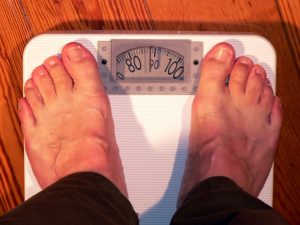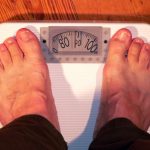
Vertigo Problem – What you need to know
Vertigo is a sense of feeling that the surrounding is spinning and is a form of dizziness. It is usually due to a problem with the inner ear but can also be related to vision problem and other health conditions. Vertigo involves a sensation of movement of things around us (objective) or a feeling that we ourselves are moving while the objects are steady (subjective). Vertigo actually projects illusion of movement.
There are a number of causes for vertigo :Vertigo primarily occurs when the inner ear fails to receive enough blood flow. Common flu or cold viruses can attach the inner ear and eventually the brain nerves which results in severe vertigo. This may result in nausea and hearing loss. Sometimes allergens like airborne particles -pollens, dust, molds, bacteria and other particles can also trigger vertigo. Diseases of the nerves such as multiple sclerosis, syphilis, tumours, etc. can also affect balance and can cause vertigo.
Vertigo can be peripheral or central. In central vertigo arises in the spinal cord or brain, while peripheral vertigo arises because of the problem within the inner ear.
What is BPPV?
Benign paroxysmal positional vertigo (BPPV) is a balance disorder that occurs when some of the calcium crystals become dislodged from its location in the inner ear, resulting in sudden bouts of dizziness, a spinning sensation, lightheadedness and nausea.
Symptoms of vertigo:
- Sensation of disorientation or motion.
- Nausea or vomiting,
- Sweating, and/or
- Abnormal eye movements
- Hearing loss and a ringing sensation in the ears
- Visual disturbances, blurred vision
- Weakness of arms and legs
- Headache
- Difficulty speaking
- Decreased level of consciousness
- Difficulty in walking
- Facial paralysis
It is important to remember that motion sickness is totally different from vertigo. Motion sickness is continuous driving in a car, boat or drive in curvy roads for a long time that results in feeling of being off-balance and lacking equilibrium.
How to diagnose vertigo:
Vertigo is diagnosed by a medical history and physical exam. Doctors will look for the above-mentioned symptoms and family history or any history including the injuries to head that might be the current vertigo conditions. Testing through CT scans, blood tests, MRI, and ECG will help to diagnose the type of vertigo one is going through.
Home remedies for vertigo:
1. The Epley maneuver or repositioning maneuver is a maneuver used to treat benign paroxysmal positional vertigo (BPPV) of the posterior or anterior canals of the ears. Now a days this is prescribed to patients at home that involves head and body movements while sitting on a bed. The goal of the Epley or Modified Epley maneuver is to restore equilibrium of the vestibular system, more specifically to the semicircular canals to treat the symptoms associated with BPPV.
2. Recent studies have shown that severe deficiency in vitamin D is also responsible for vertigo and BPPV. Vitamin D supplementation can help patients who are diagnosed with BPPV.
3. Herbal remedies such as ginger root, Ginkgo biloba, and coriander may help reduce vertigo symptoms in some people. In addition one can try these remedies too.
- A Good Night Sleep : Lack of sleep is one of the reasons that lead to vertigo. Continuous, undisturbed sleep helps many to overcome vertigo.
- Coriander and gooseberry: Soak 1 tablespoon of coriander seeds and 1 tablespoon of gooseberry powder overnight in water. Strain it in the morning. Add half tablespoon of sugar and drink it right away. This remedy will treat vertigo naturally.
- Lemon: Squeeze half lemon, add one tablespoon sugar, 1/4 black pepper powder, little salt and add lukewarm water and drink. Lemon is a good medicine for vertigo. Add lemon juice to your salad.
- Ginger: To control nausea eat few pieces of ginger. One can make ginger tea and have it with turmeric powder.
- Almond milk: Soak few almonds overnight in water. Peel the skin in the morning, grind and extract milk and drink. Or prepare almond paste from soaked almonds, add paste to lukewarm milk and drink. Almond has rich source of protein, carbohydrates and good nutrients. This helps to overcome the weakness.
- Strawberry: Eat few strawberry everyday for few days. If you don’t like the same taste everyday add little yogurt and make a smoothie and drink strawberry smoothie.
- Holy basil: Chew few holy basil leaves everyday or add it to ginger tea. Collect holy basil seeds and soak in water for few hours and drink. Or add fresh holy basil leaves to water and drink throughout the day.
- Water and juices: Drink plenty of water to keep yourself hydrated. Drink fresh fruit juices – tomato, orange, pineapple, watermelon and apple juices to overcome the weakness.
4. Acupuncture: Try acupuncture therapy that helps to gain the body balance. According to Chinese medicines, there are a variety of etiological factors that can cause vertigo condition. Emotional depression or anger can damage liver yin and result in the rise of liver yang or wind. Extended illness, stress, anxiety, over-pensiveness, or weak heart and spleen can cause deficiency of qi and blood. The acupuncture treatment focuses on balancing the Qi in the meridians and to harmonize, calm and strengthen the internal organs.
5. If you have vertigo then stop these substances: Tobacco, smoking, chewing tobacco, caffeine, soda (diet or any other form too), alcohol, drugs etc that keeps one alert and disturbs the mind.
6. Wear caps and scarf: If you are stepping out in cold weather or during storms and wind – make sure to wear hooded jackets. Cover your ears with caps, head bands and other ear protectors so that air should not bother your ears.
7. Yoga and meditation: Yoga practice helps to overcome vertigo. Yoga helps to flow pure blood to brain. Try following postures to overcome vertigo.
- Shanmukhi Mudra :This practice calms the brain and the nervous system and can be helpful in prevention and reduction of anxiety, irritation or anger. It relaxes and rejuvenates the eyes and the facial nerves and tissues.
- Nadi Shodhan Pranayama :This process purifies the blood and respiratory system. The deeper breathing enriches the blood with oxygen and strengthens the respiratory system and balances the nervous system.
- Salamba Sirsasana : Apart from curing vertigo, when practiced for some time, it also stimulates the pituitary and pineal glands, which aid in growth and the production of sex hormones.
- Halasana :It calms the nervous system, reduces stress and stimulates the thyroid gland.
- Shavasana :This posture brings a deep, meditative state of rest, which may help in the repair of tissues and cells, and in releasing stress. It also helps in reducing blood pressure, anxiety, and insomnia.
Avoid any downward poses, sudden forward bending and workouts that involves head bending, balancing act etc as it may cause dizziness.
Disclaimer: This article is for education purpose only. If you or your loved ones are suffering from vertigo, consult your doctor before proceeding with any of the above-mentioned remedies.
References:
- http://www.artofliving.org/
- http://www.homeremedyshop.com/
- http://www.longmontacupuncture.net/
- http://dremilykane.com/
Image credit: Photo by Brannon Naito on Unsplash (Free for commercial use)
Author: Sumana Rao | Posted on: April 18, 2016
« Activities for Babies and Toddlers The Negative food pairing – in a positive way »




















One Comment on “Vertigo Problem – What you need to know”
Great article! You are sharing the great info about vertigo problem. I really like this article so much. Thanks a lot for sharing.
Write a comment